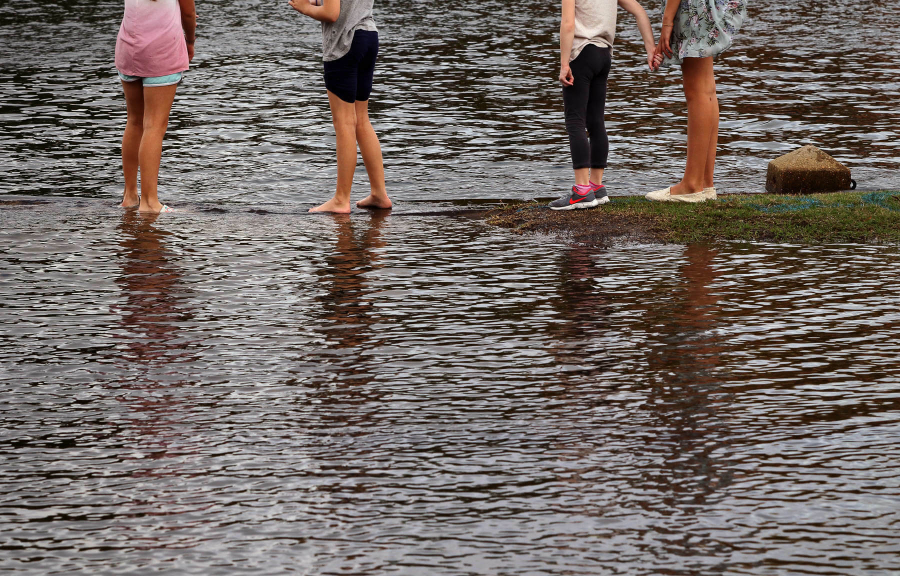A new report gives Virginia a realistic view of the future

The impacts of climate change are being felt throughout the entire 64,000-square-mile Chesapeake Bay watershed, but in the Commonwealth of Virginia, one region in particular is considered to be at the forefront. Coastal areas of Virginia, particularly in the Norfolk—Hampton Roads—Virginia Beach area where the Chesapeake Bay meets the Atlantic Ocean, a changing climate is impacting both environmental and human health.
Impacts of climate change in coastal Virginia
According to a 2021 report released by the Virginia Academy of Science, Engineering and Medicine (VASEM), climate change is resulting in more extreme weather which has brought about recurring flooding and increasing sea-level rise along the coast of Virginia. The VASEM report pointed out some astounding figures:
- Using rain gauge records collected from the Norfolk airport, it was determined that heavy rainfall had been increasing at a rate of about 3% per decade until 1950. At that time, the frequency more than doubled to a rate of approximately 7% per decade.
- Compared to 100 years ago, today there are 30 more evenings each year that measure 68 degrees Fahrenheit and above.
- In 1960, the Hampton Roads area had 1.7 days of tidal flooding. By 2014, this figure had grown to 7.3 days, with many of them occurring as sunny-day flooding.
- The length of the growing season has increased by more than 30 days over the past century.
- Virginia’s portion of the Chesapeake Bay receives approximately 4.5 more inches of rain every year than it did 100 years ago, which is an increase of 12%.
Climate is impacting the economy now
Over the next century, it is our farmers—both of land and the Bay—that will have their livelihoods most negatively impacted by a changing climate. More frequent extreme weather—from heavy rain to longer drought periods—coupled with rising temperatures will wreak havoc on crops. Higher temperatures can dry out soil quicker and impact seed germination. More flooding events, particularly from sea-level rise, allows the salinity of the soil to increase, damaging land production.
Virginia is currently the third largest producer of marine products in the country, but climate change is already starting to impact the food cycle for Bay fisheries. Plankton, which is typically what fin-and-shellfish feed on, tend to respond quickly to changes to their habitat. Rising temperatures and increased salinity and carbon dioxide in the water will cause plankton to decrease and new species to move in, impacting the larger food chain.
Rising water and air temperatures allows for the spread of harmful algal blooms and water-borne diseases like Vibrio. These diseases impact the economically-important oyster and blue crab populations of the Bay, but they can also be a danger to public health. The VASEM report estimates that there are approximately 34,000 cases of Vibrio in Virginia each year, with about $40 million in associated economic costs.
In addition to unsafe waters to fish and swim in, and declining shellfish populations, more flooding and sea-level rise threatens important cultural and historic sites. Put all of these factors together, and tourism and recreation will be impacted as well.
Economic and policy measures to adapt to climate change
Despite that less-than-rosier outlook, the VASEM report provides recommendations for the Commonwealth to consider that will help to mitigate and adapt to these threats. First and foremost, it must be known that climate change is not only a problem for coastal Virginia. Any actions taken must be addressed state-wide and built into the operations of every agency within the Commonwealth.
Other opportunities vary from establishing a council of legislators and residents to create a statewide action plan to developing a process for handling climate emergencies that specifically addresses impacts on underesourced and disadvantaged communities. The report also calls out the importance of collecting and sharing climate data from a variety of sources and details opportunities for businesses to get involved by providing incentives for developing innovative resiliency products and technologies.
The time is now for climate preparation
Whether through agriculture, policy or business, it’s clear the time to address climate change is now. On Friday, October 1, 2021, the Commonwealth will take another important step forward on climate by signing Directive No. 21-1 Collective Action for Climate Change along with other members of the Chesapeake Executive Council. For more information on the meeting, including how you can watch live, please visit https://www.chesapeakebay.net/who/ecmeeting/2021_executive_council_meeting.

Comments
There are no comments.
Thank you!
Your comment has been received. Before it can be published, the comment will be reviewed by our team to ensure it adheres with our rules of engagement.
Back to recent stories